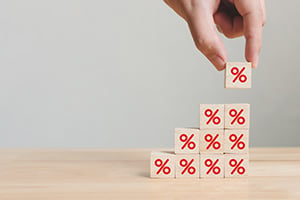 To be honest, I probably would not have used that headline a couple of weeks ago. Although I spent about a month putting together my talk for Commonwealth’s National Conference, which pretty much comes to that conclusion, I was not yet at a point where I would put that as the headline. Even as I rehearsed the night before, I was thinking about how I would handle the talk if the next morning’s data release—just hours before the talk itself—put inflation back up again. I couldn’t rewrite my presentation, as there wasn’t enough time (and besides, the art department was already upset with me).
To be honest, I probably would not have used that headline a couple of weeks ago. Although I spent about a month putting together my talk for Commonwealth’s National Conference, which pretty much comes to that conclusion, I was not yet at a point where I would put that as the headline. Even as I rehearsed the night before, I was thinking about how I would handle the talk if the next morning’s data release—just hours before the talk itself—put inflation back up again. I couldn’t rewrite my presentation, as there wasn’t enough time (and besides, the art department was already upset with me).
Lo and behold, the data did exactly what I had thought it would do, for probably the first time ever, and I got to give the talk full of confidence. That was great, even though I could still be wrong. But I don’t think so.
While you can’t rely too much on any one data point or monthly report, the signs are now that inflation has peaked and will continue to move lower. My talk was about the different ways to look at inflation, and all of them are now pointing lower. As promised, this is the first of a series of posts that walks through those arguments, but the final conclusion is in the headline. So, how did I get there?
What Is Inflation?
The first step is to look at what inflation is. Inflation is, simply, higher prices. That doesn’t actually tell us much until we consider why prices are rising. And here there are two ways to view it. One is to look at the increases in different components (energy, food, goods, and services being the major ones) and then conclude that we can understand inflation from those changes. Recently, for example, energy and food prices went up and spiked inflation. This is useful and necessary, but not complete, largely because it is backward looking. It can tell us what happened, but not why.
What Drives Inflation?
The second way to view inflation is to look at the conditions that give rise to it. This is the monetarist explanation, which focuses on interest rates and the money supply. The quote often heard is that “inflation is always and everywhere a monetary phenomenon,” from Milton Friedman. This approach is also useful and necessary—but not complete. It tells us why inflation happens, but not exactly what happened.
The argument I made in the talk, which I will describe in more detail in future posts, is that there are three drivers of inflation: supply changes, demand changes, and money changes. The insight I offered was that the more of these drivers that are present, the higher inflation has been over the past several decades. Looking at it that way, not only do we get explanatory power in the past, but we also can understand what has happened in recent years by tying the two explanations together, along with some theory. Most important, we can use it to see where we are headed.
The core of the talk was to look at the three components and how they have changed in the past two years. Post-pandemic, we had all three inflation generators in play. Demand was up, with Covid-19 stimulus programs. Supply was down, with supply chain problems. And money was cheap, with zero and negative real interest rates. With all three in full force, small wonder we saw an explosion of inflation.
Are Things Changing?
Now, things are changing again. For demand, while strong employment has kept demand fairly high, the stimulus payments have been spent and real wage growth has been negative, taking it down from the levels of six months ago. Supply chain problems have largely eased as well, and even the energy and goods cost spikes have faded. Finally, interest rates have moved sharply higher, the effects of which are already visible in the housing market. From all three inflation drivers, we have now moved down to perhaps one, in the form of demand. That’s a big change. And if the theory is correct? We should be seeing inflation dropping as well.
The Real Takeaway
Data doesn’t always follow theory in a timely fashion, which is why I was nervous before my talk. But this time, it did—and the individual components also continue to move as expected. Going forward, we can reasonably expect inflation to continue to decline, probably to between 3 percent and 4 percent by the end of next year.
I will develop the argument in more detail over the next several posts. For now, the real takeaway is simply that inflation has peaked here in the U.S., and that has many positive implications for the economy and the markets.


 Print
Print

